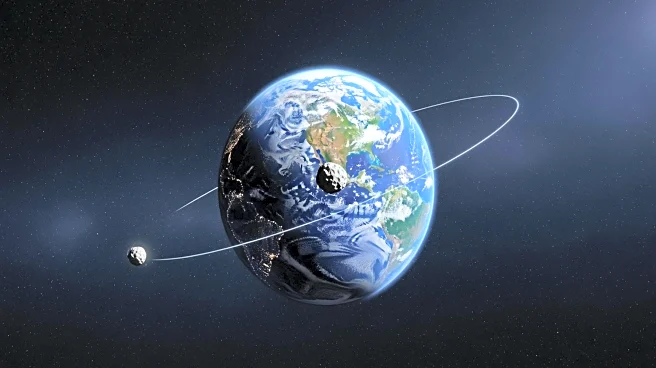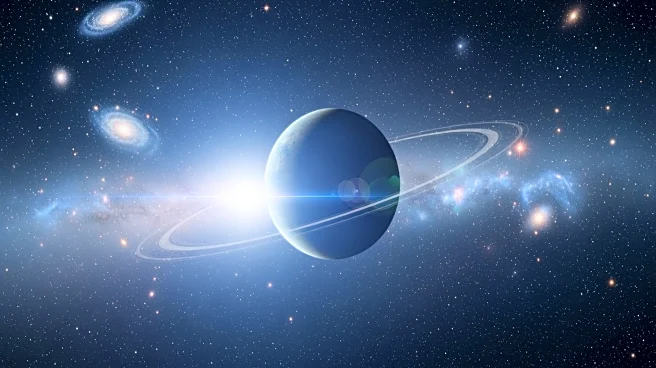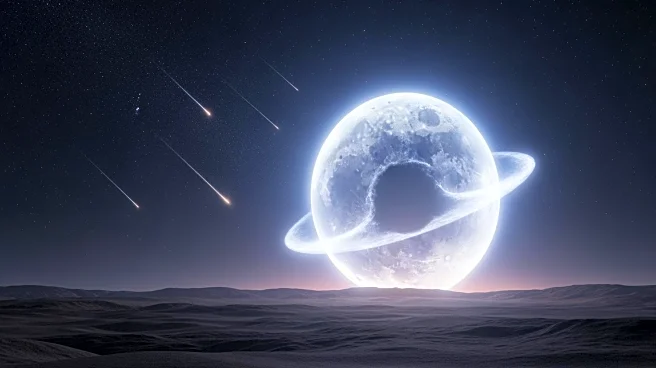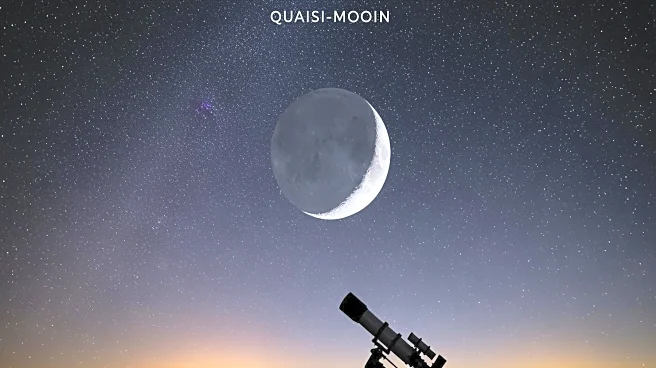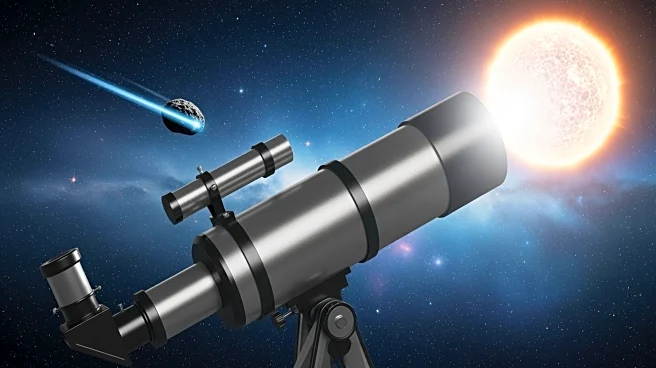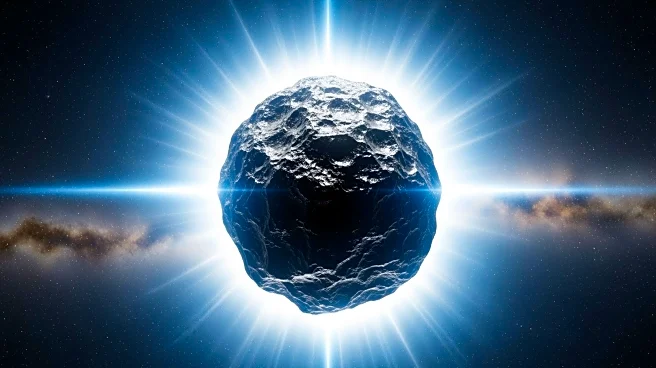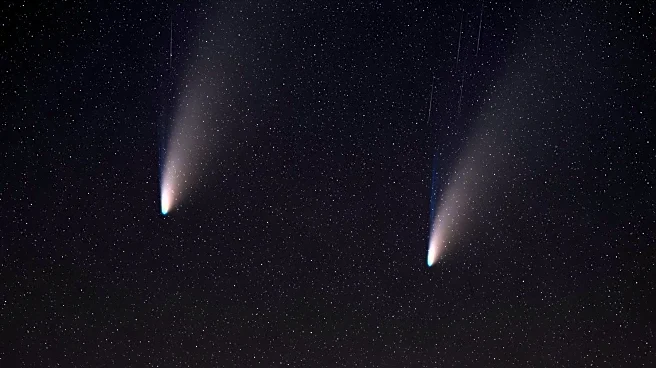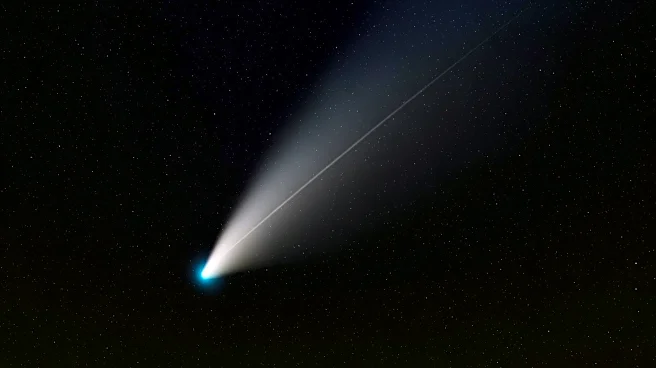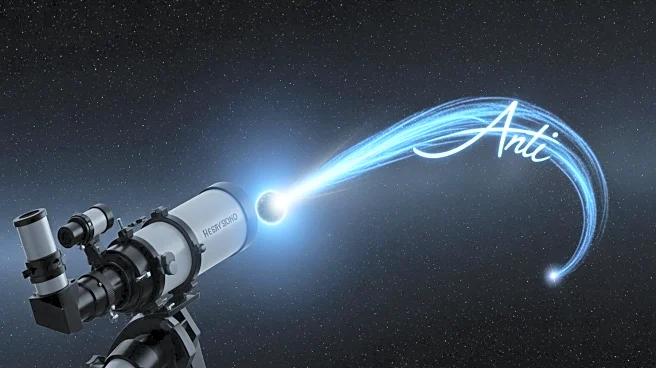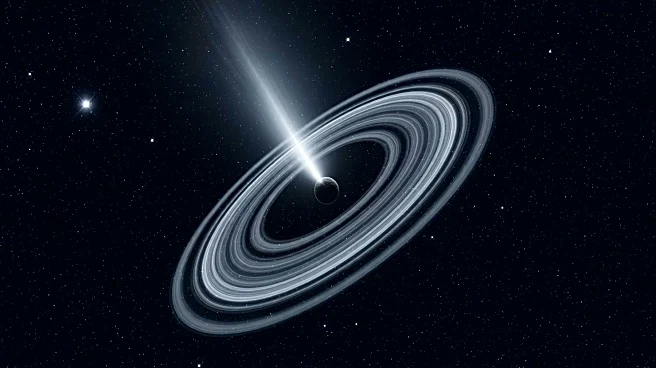What's Happening?
An asteroid named 2025 PN7 has become a 'quasi-moon' to Earth, sharing its orbit until 2083. Quasi-moons do not orbit Earth but follow similar paths around the sun, occasionally appearing to orbit Earth.
This phenomenon occurs due to the asteroid's oval-shaped orbit, which sometimes brings it closer to the sun than Earth. The asteroid was discovered using the Pan-STARRS telescope in Hawaii and has been in orbit for six decades. Quasi-moons are typically small and not visible without telescopes.
Why It's Important?
The discovery of 2025 PN7 as a quasi-moon provides insights into the dynamics of near-Earth objects and their interactions with the planet. Understanding these objects is crucial for studying the solar system's evolution and potential asteroid threats. The research highlights the complexity of celestial mechanics and the need for continued observation of space objects that could impact Earth. It also emphasizes the importance of advanced telescopes in detecting and studying faint and distant objects.
Beyond the Headlines
The study of quasi-moons like 2025 PN7 contributes to the broader understanding of the solar system's structure and the movement of asteroids. It also underscores the potential for future discoveries of similar objects, enhancing knowledge of the solar system's history and dynamics.
